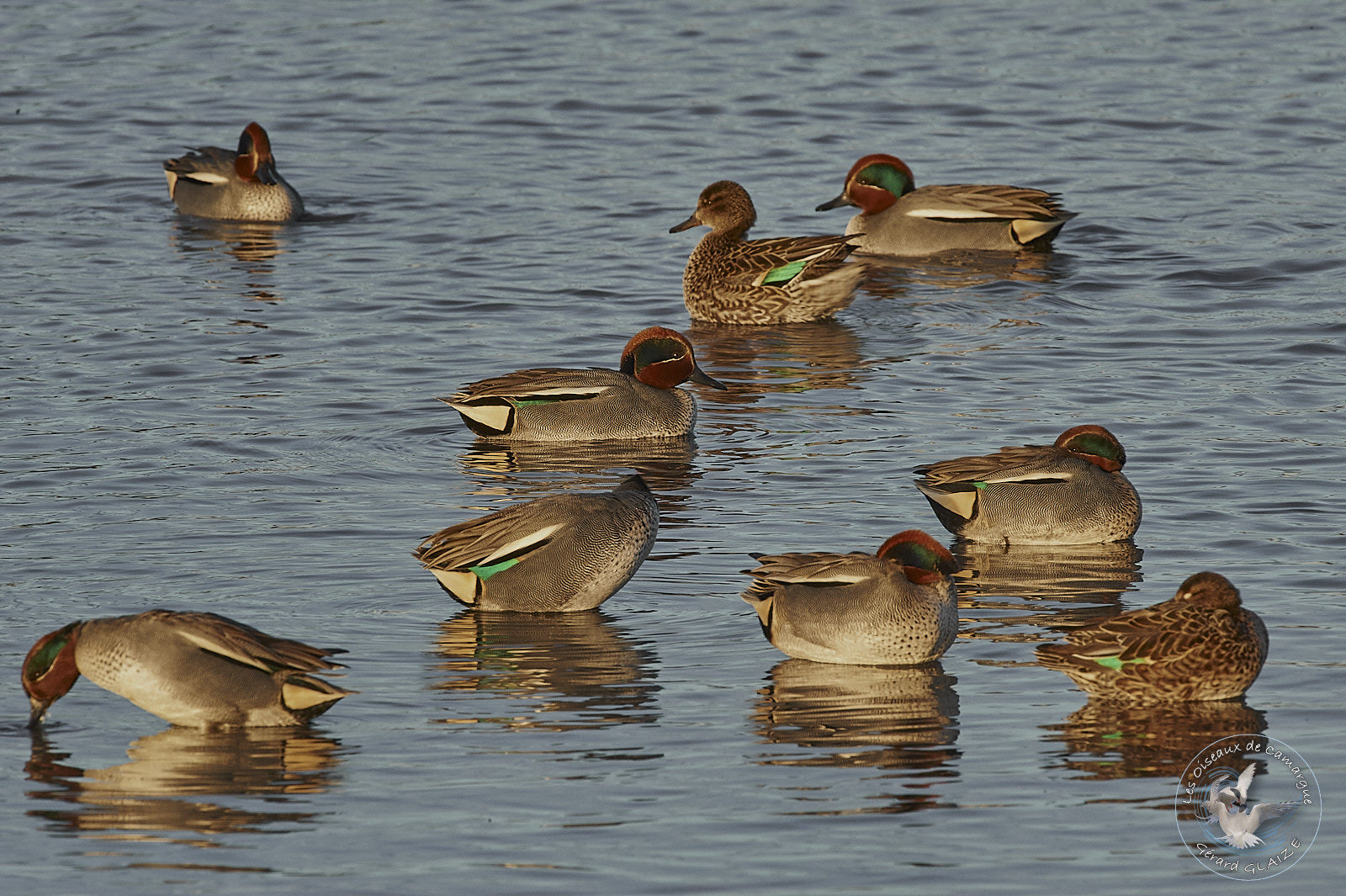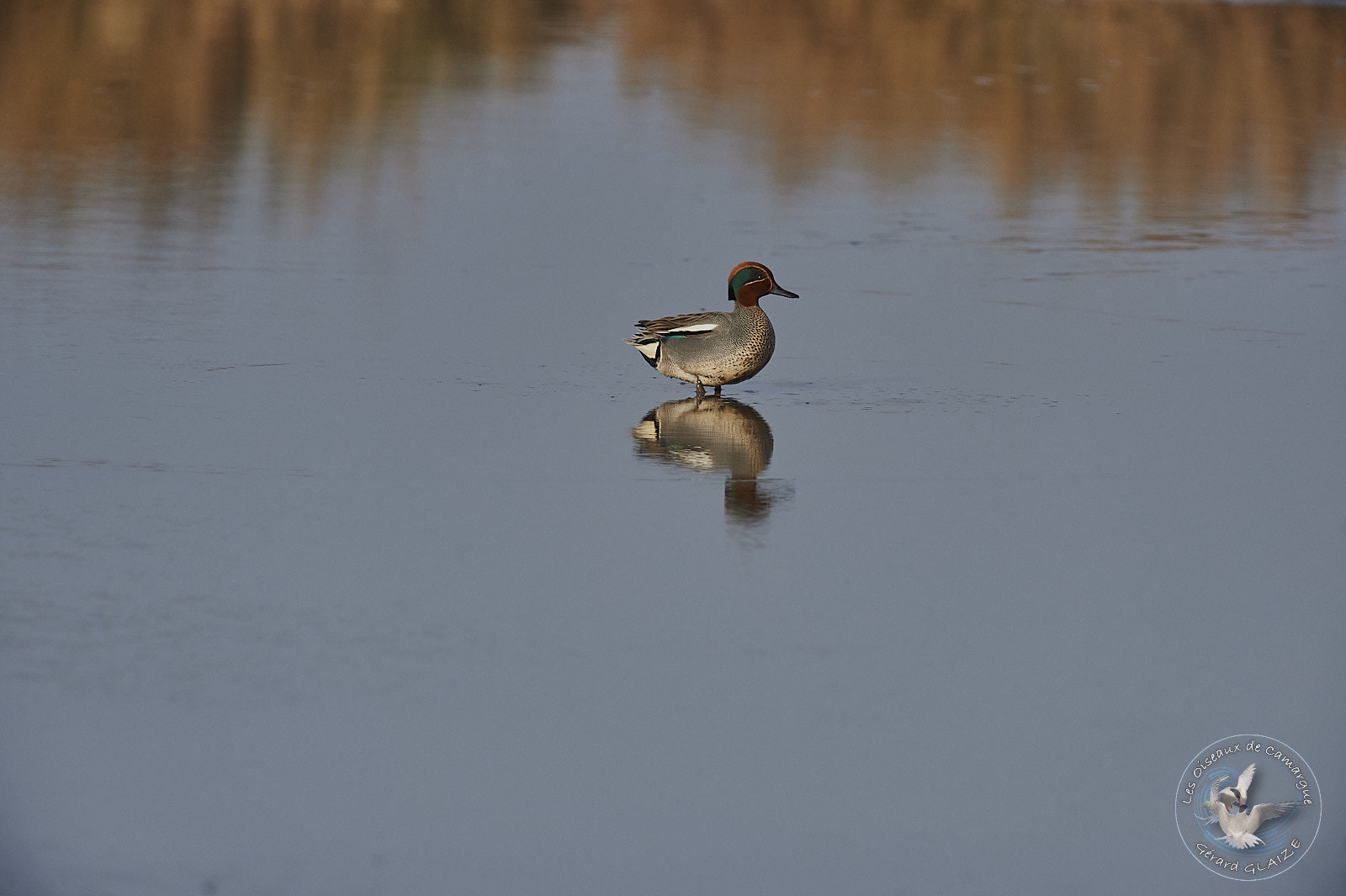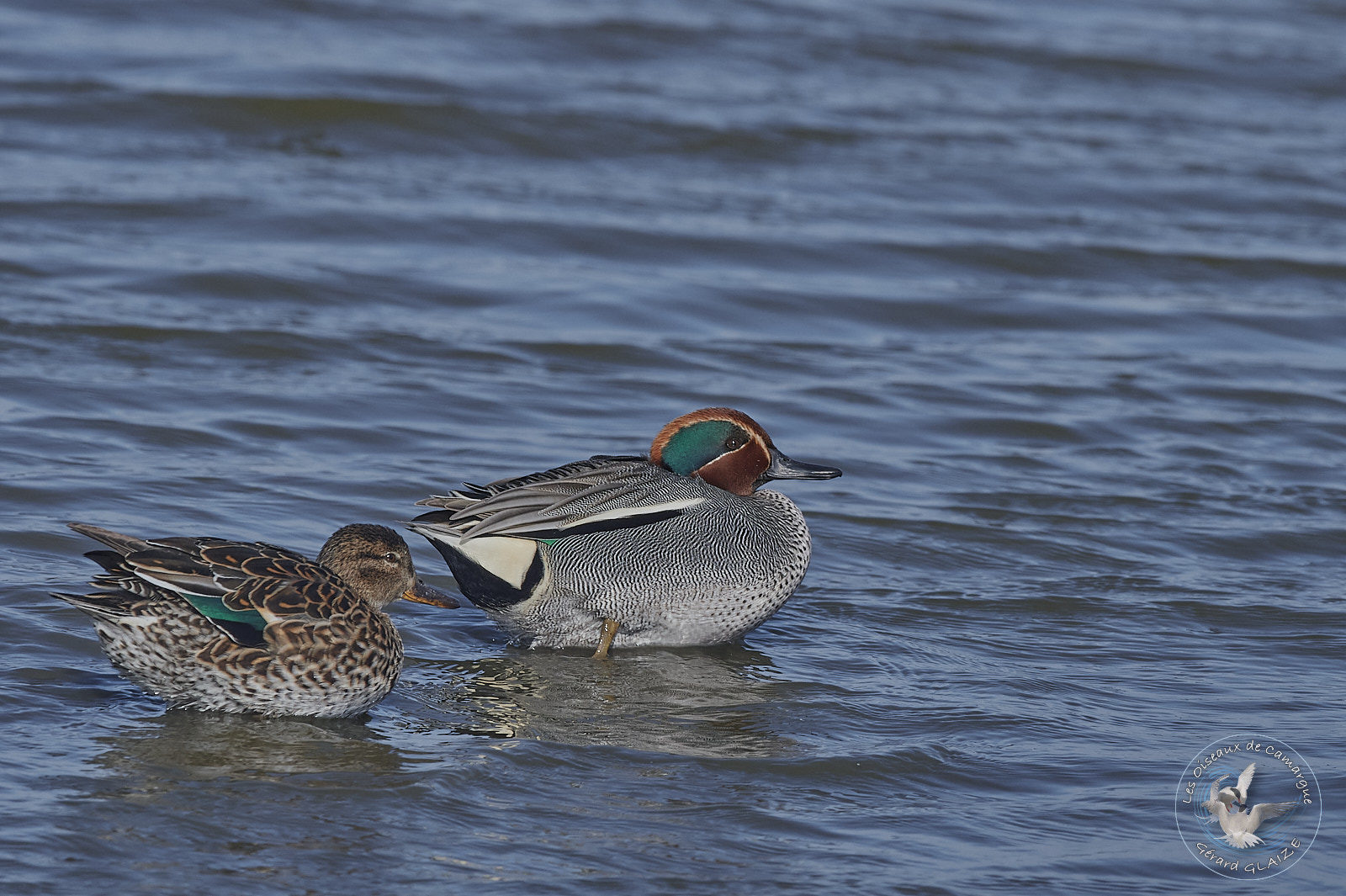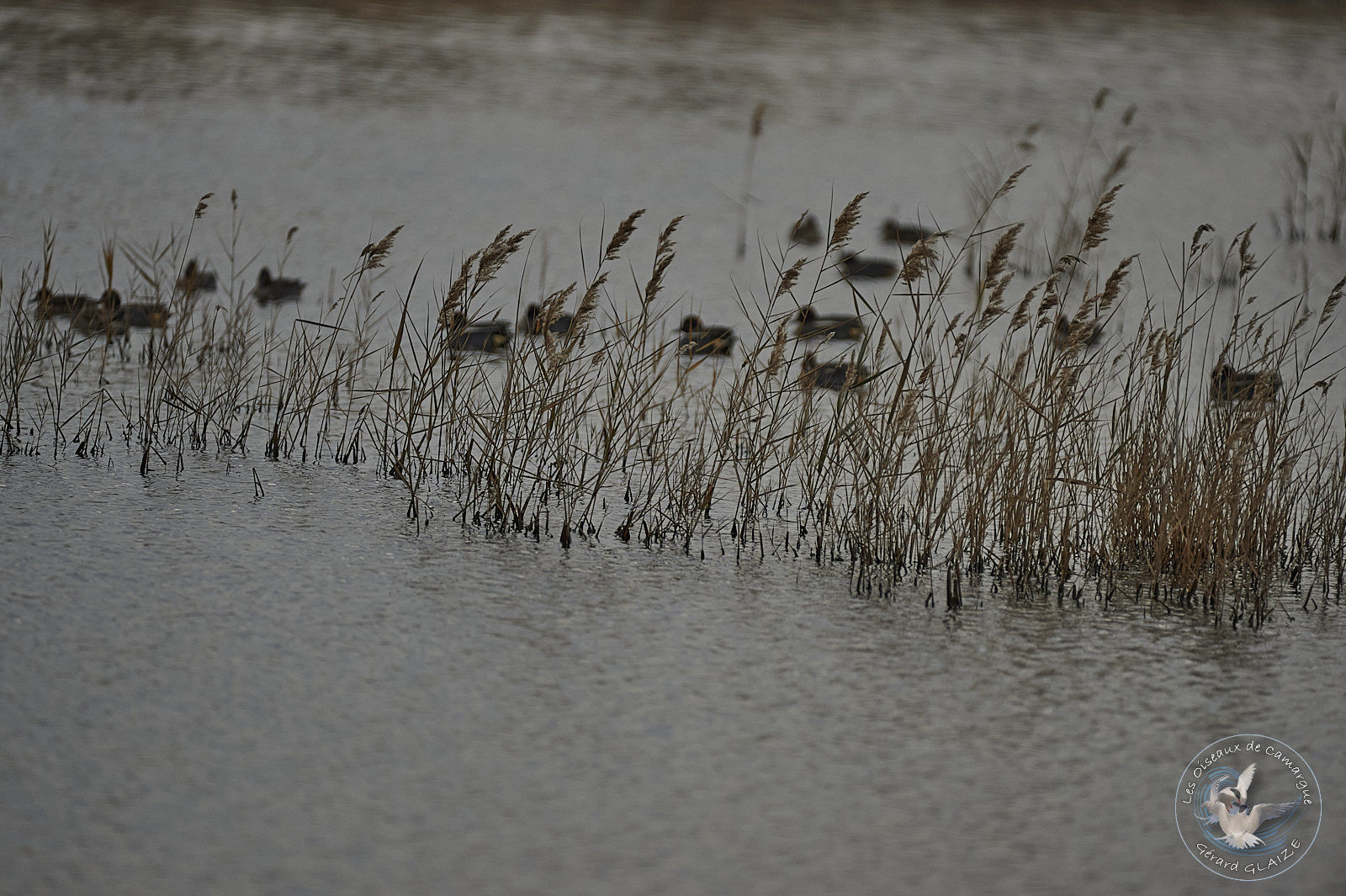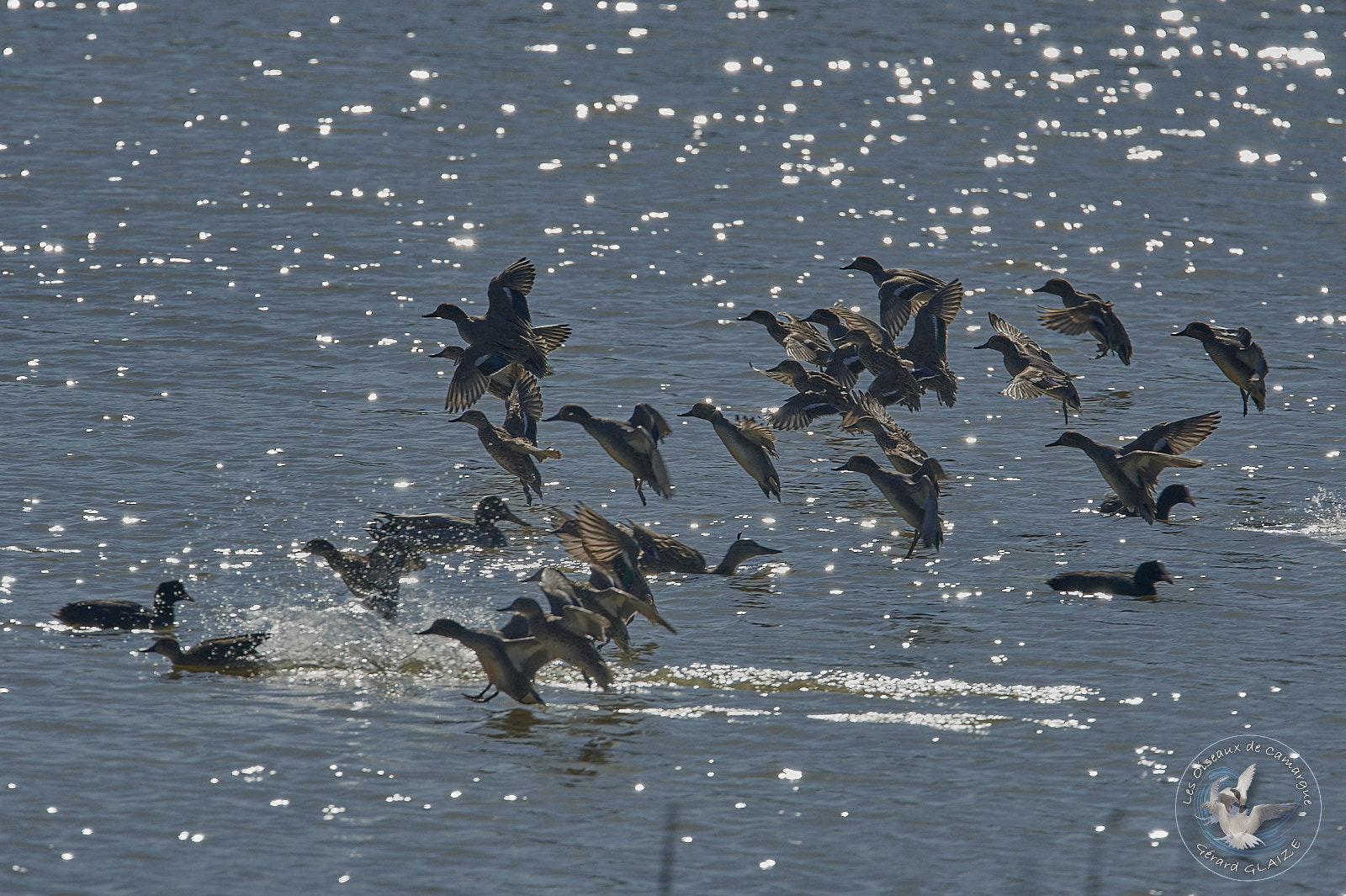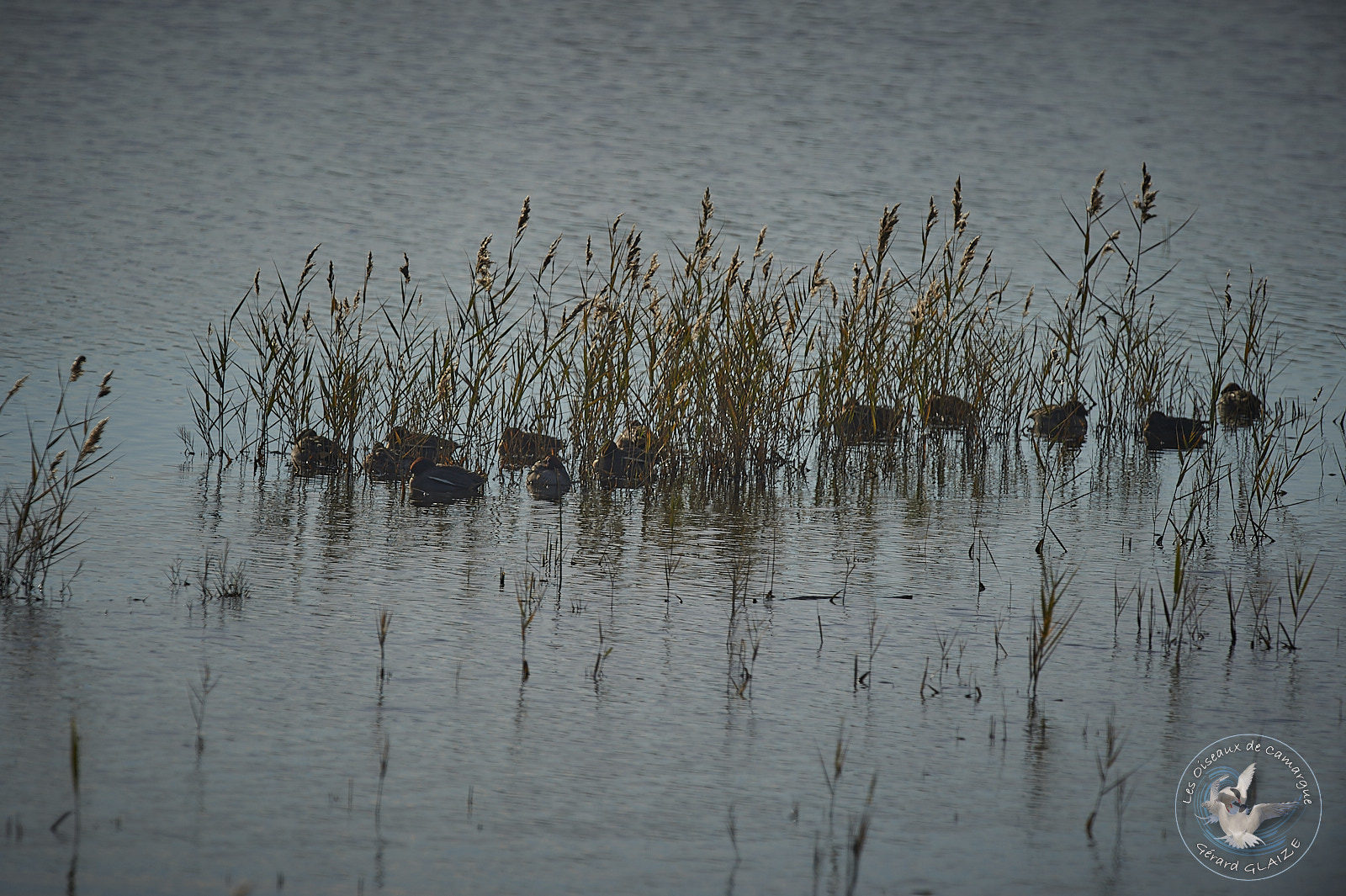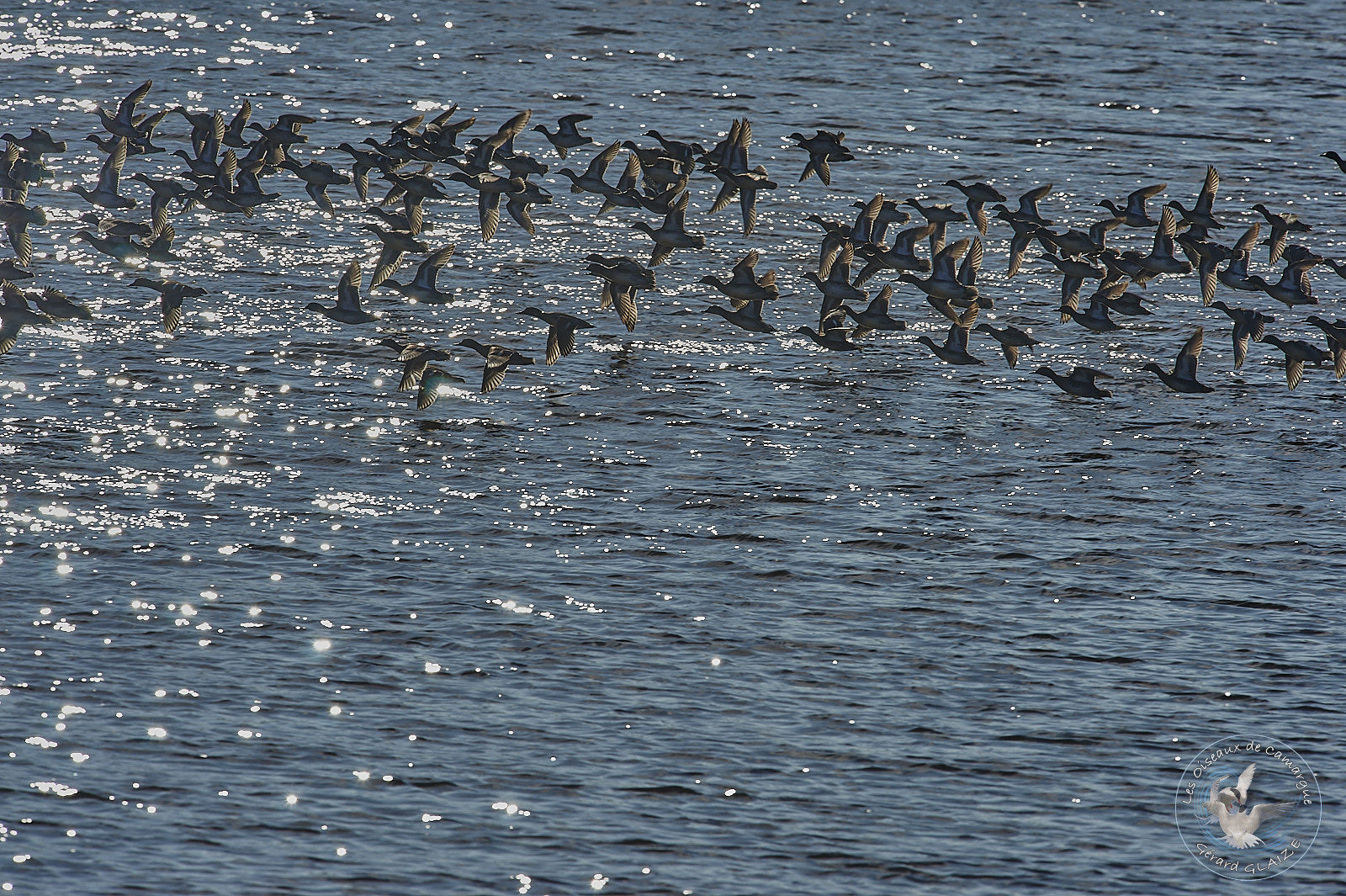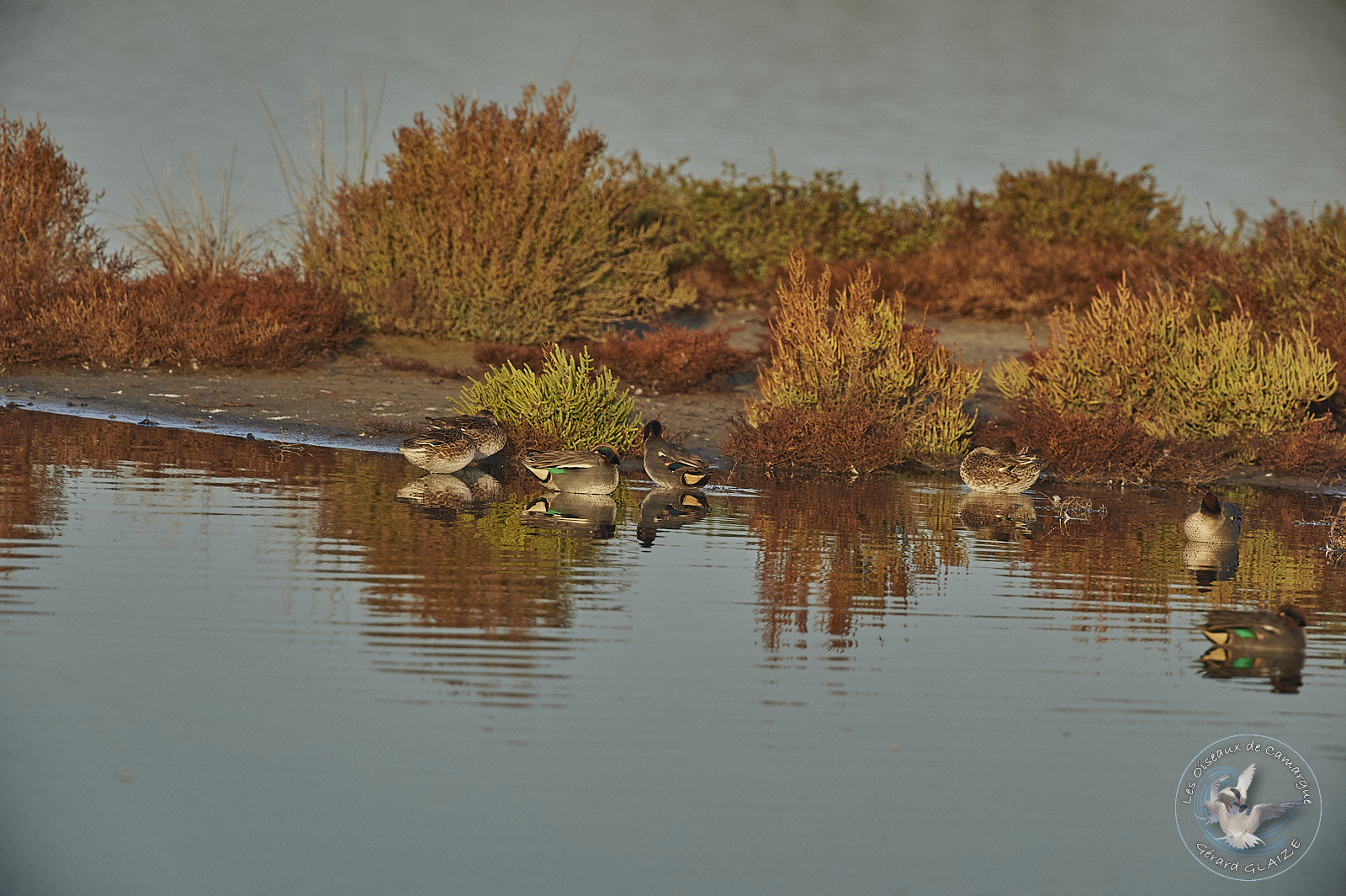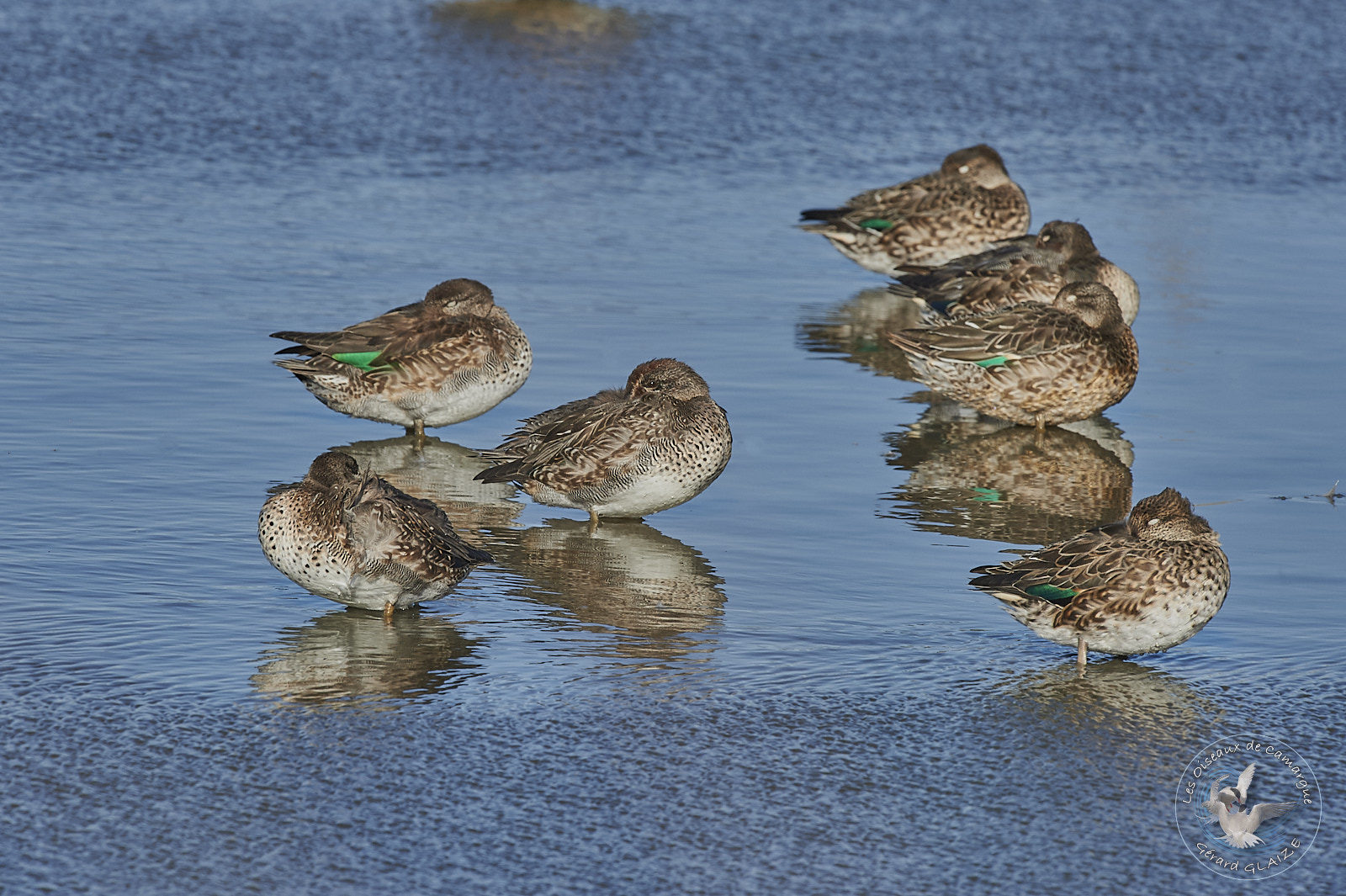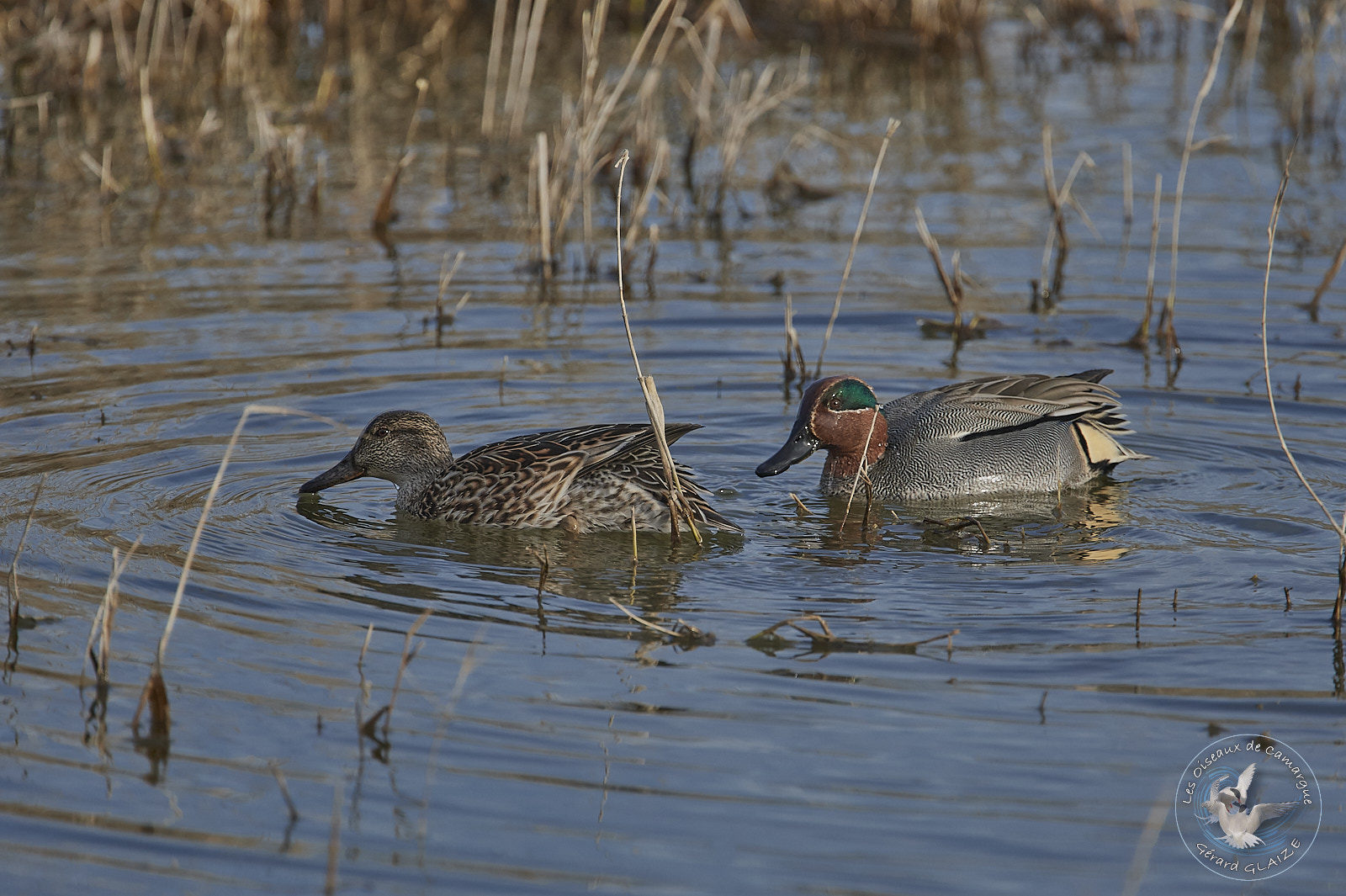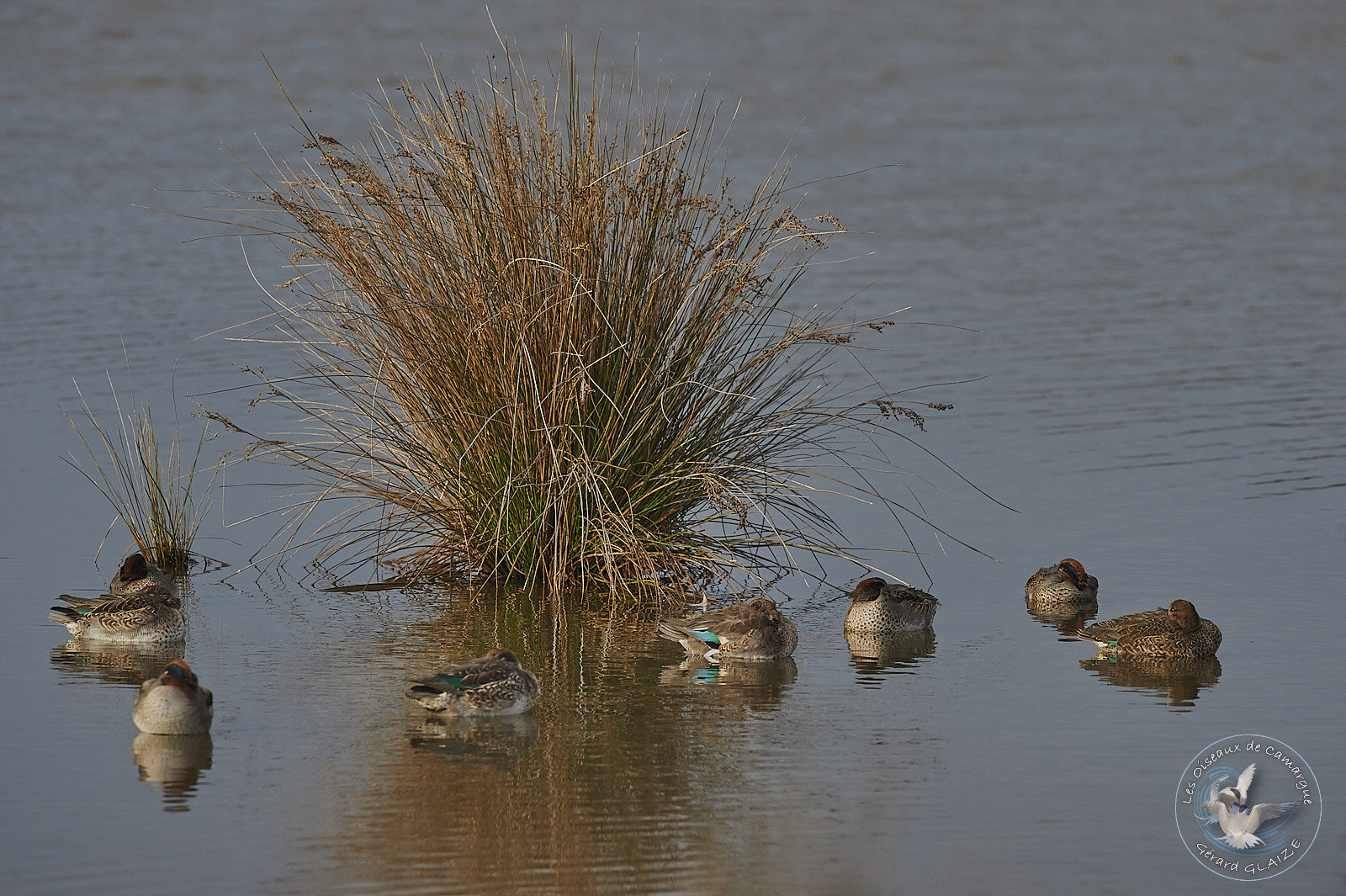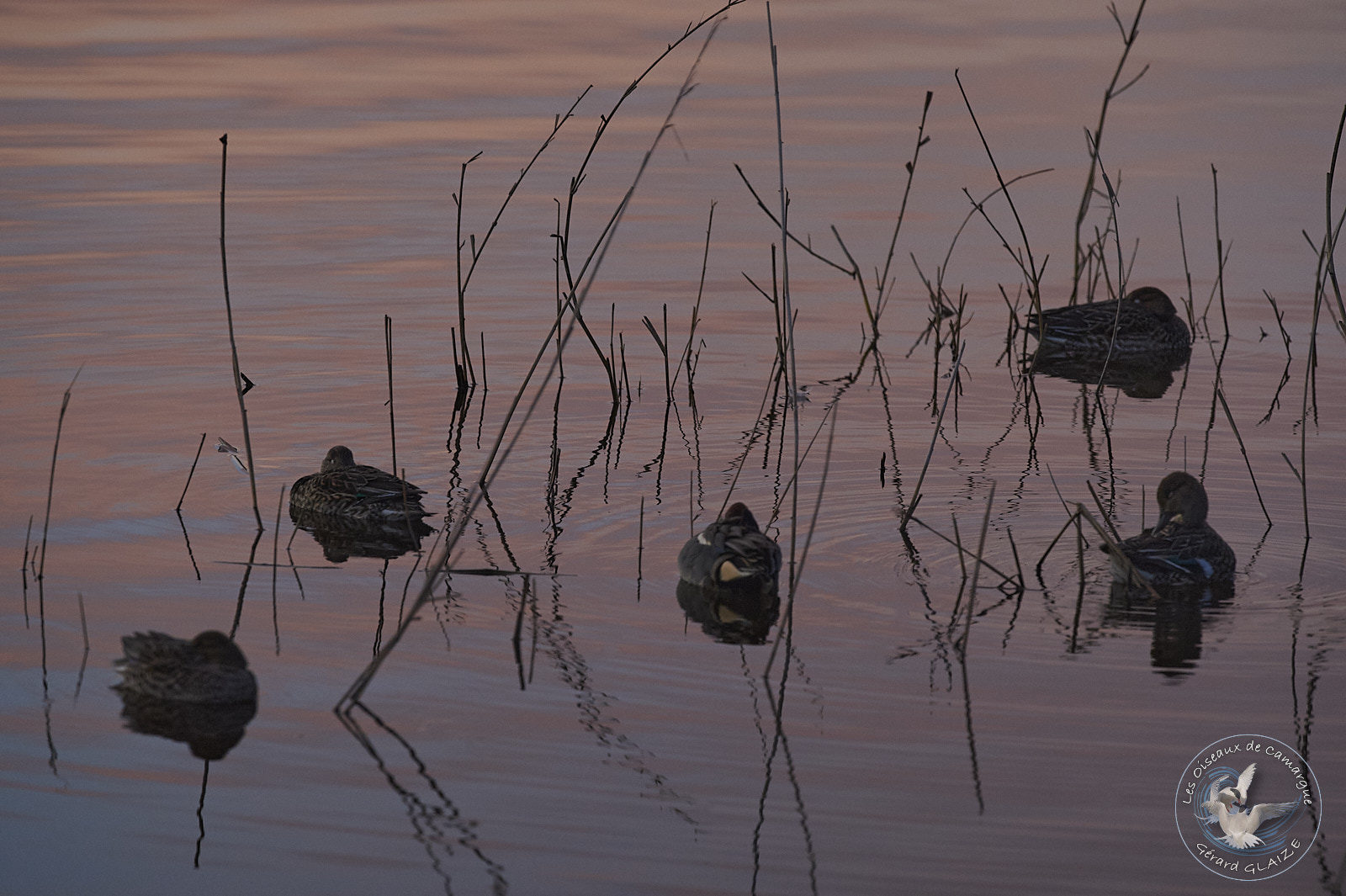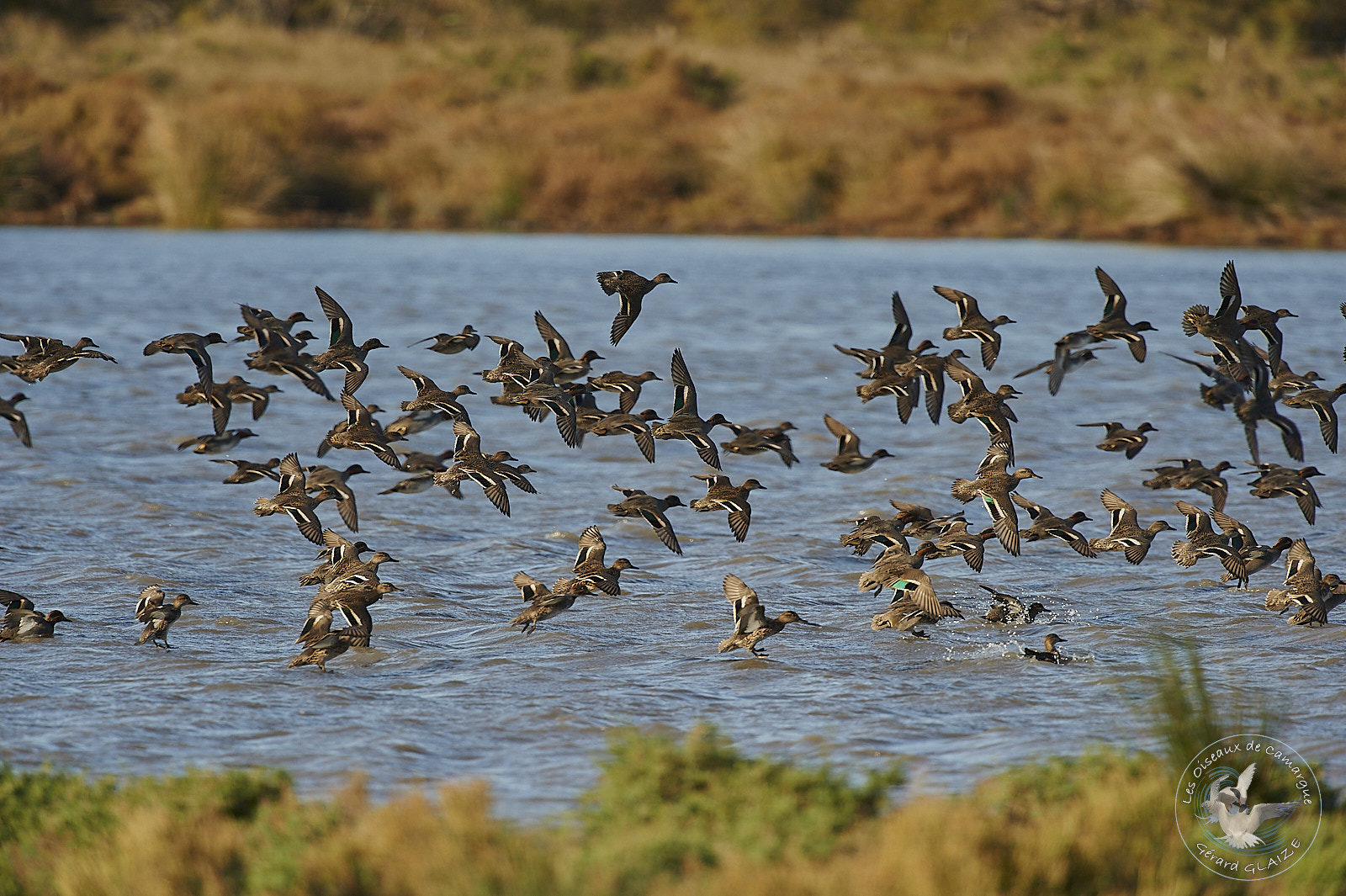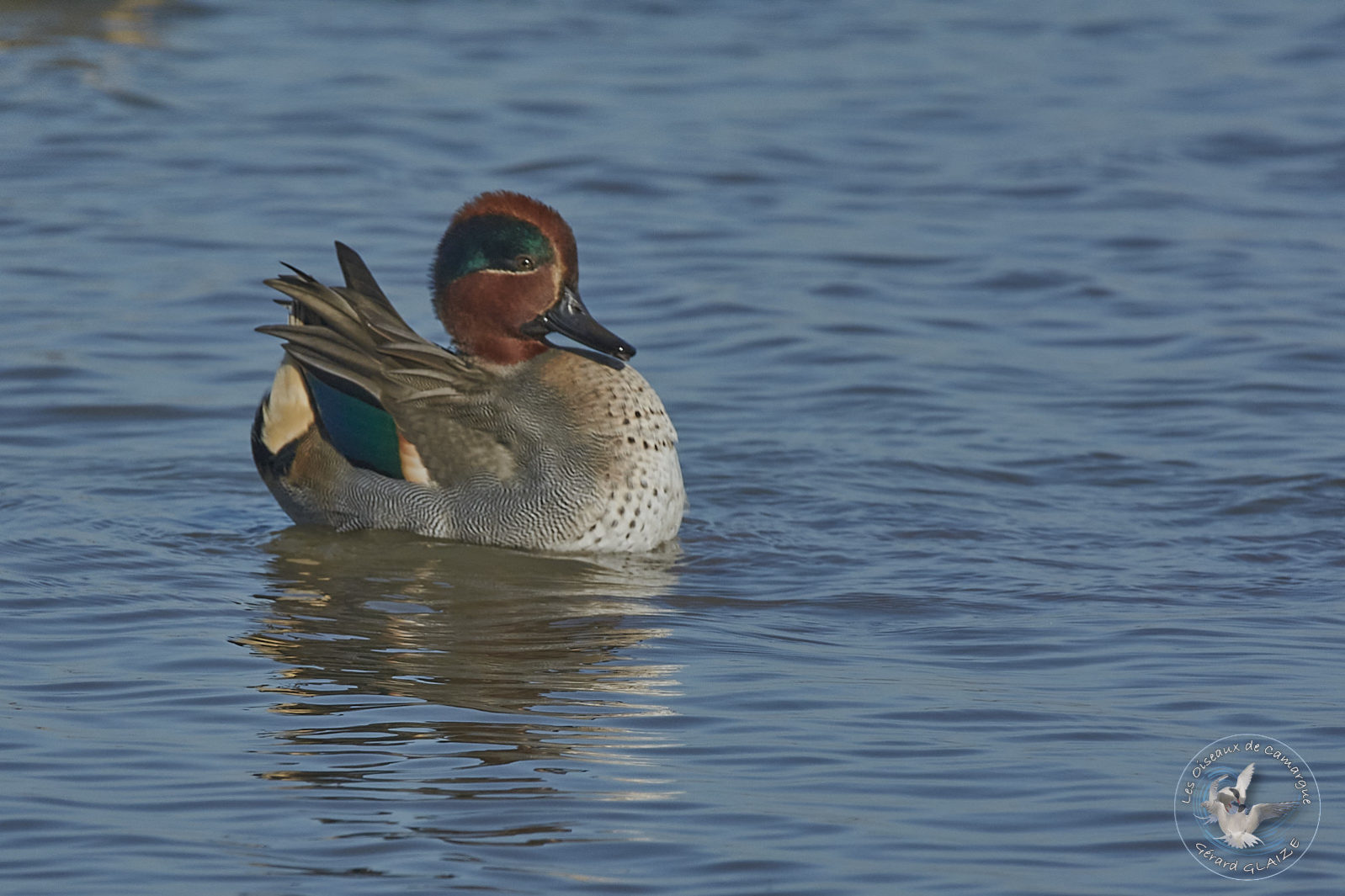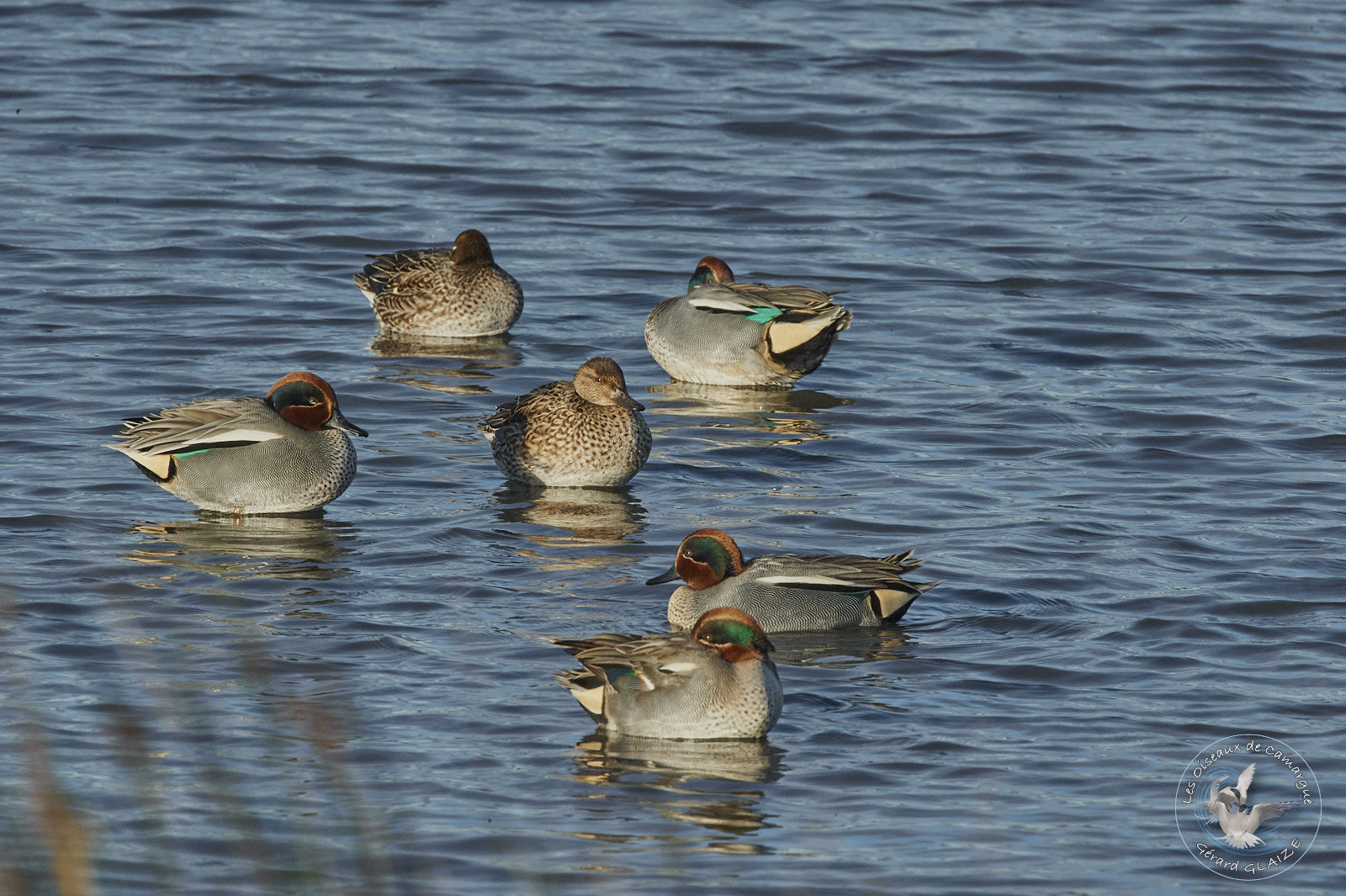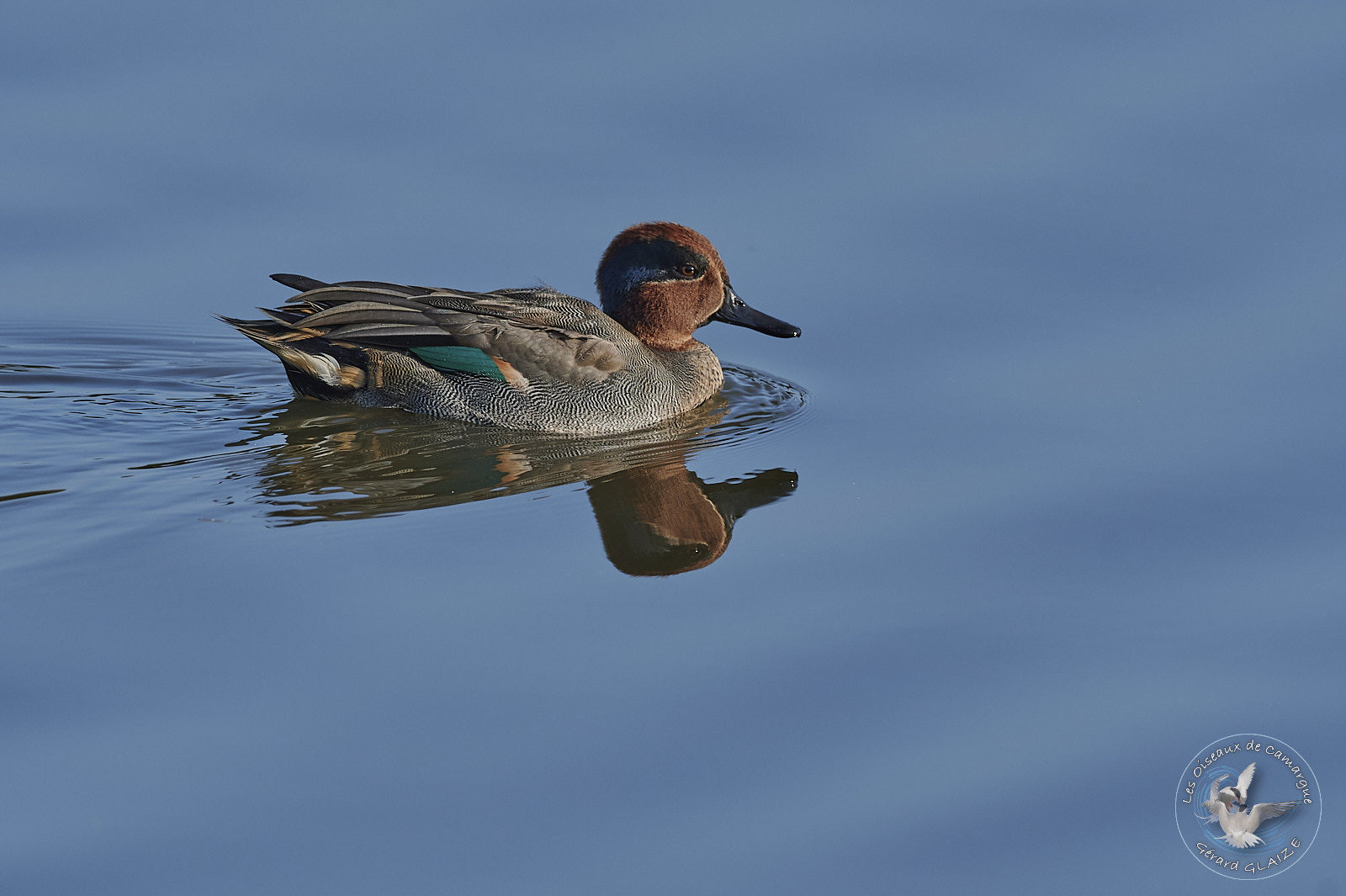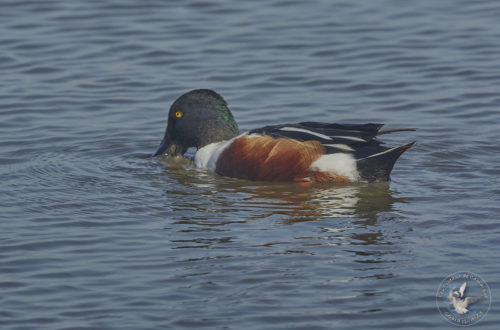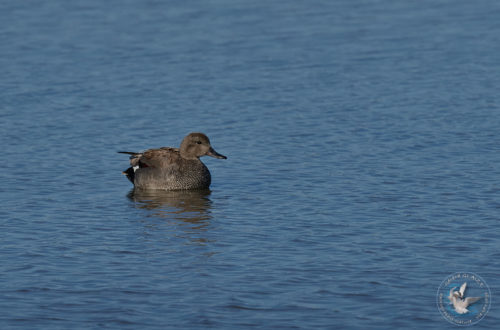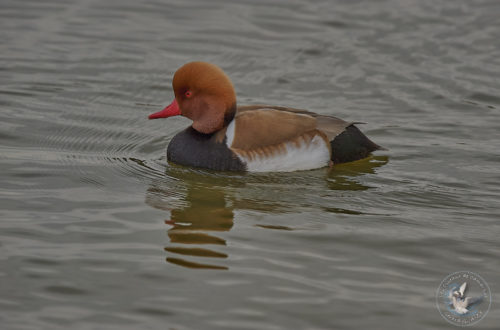Eurasian Teal
Eurasian Teal is the smallest of the common surface ducks. It is an excellent sailboat, nervous, often active and noisy at night. It is found in Europe, North America and also in Asia. In these regions, it lives in temperate to northern zones. It is hunted in large numbers in Europe and North America.
This species shows a clear sexual dimorphism during the breeding season. The male gradually takes on its nuptial plumage from October onwards. It is kept between winter (courtship displays) and summer (separation of couples of the year). In breeding plumage, the male appears dark from afar, except for the yellow patch under the tail; closer the head is rufous-brown with a broad green eyebrow behind the eye, the beak is black, the speculum green.
When it moults, it can be confused with the winter teal. During winter, it is found on shallow ponds, reservoirs, marshes and estuaries.
The Eurasian Teal is a very sociable bird, which is always in groups. It mixes readily with other ducks, especially mallards. It is rather gregarious and does not exhibit territorial behavior. The Eurasian Teal tends to congregate and fly in small groups.
Eurasian Teal
Scientific name : Anas crecca
Family : Anatidae
Length: from 34 cm to 38 cm – Wingspan: from 58 cm to 64 cm
Weight: from 250 gr to 400 gr
IUCN Conservation Status: LC
Flight
Clumsy on land, the Eurasian Teal has an agile, rapid and direct flight, carried out with great energy. She is thus able to take off very quickly, and to make sudden changes of direction and pirouettes. During migration, this bird flies in flocks of up to a thousand birds. However, there is a great coordination between the members of the cloud.
Habitat
The Eurasian Teal is looking for shallow waters in the spring of waters. In particular, it concerns those located near forests and provided on the outskirts of herbaceous coverage conducive to nesting. Small freshwater pieces and shallow marshes with abundant emerging vegetation are preferred to large bodies of water. She also searches for rivers in a wooded environment.
Regime – Diet
Although both diurnal and nocturnal, the Eurasian Teal concentrates a significant part of its activity at dusk and during the night foraging. The green-winged teal does not dive entirely to feed, but it may do so for protection from a predator. Its diet is essentially composed of plant matter: small seeds that it collects on damp or slightly flooded land at the edge of ponds, in freshly harvested corn fields, rice fields or marshes. However, it also feeds on micro-organisms, insect larvae, crustaceans and molluscs which it fishes from the brackish and shallow waters of the mudflats by filtering the water with its beak.
Nesting
The spectacular courtship display is quite similar to that of the mallard duck. Nidification takes place from April to July. The Teal builds its nest on the ground near water, and lined it with down. The female lays a single clutch of 8 to 11 eggs and incubates them for 25 to 30 days. Ducklings are precocial. Fledging takes place after 25 to 35 days. A replacement clutch is possible if there is a loss of eggs.
Migration
It is a partial migrant. Post-nuptial migration begins at the end of July and continues until November-December. The prenuptial migration begins at the end of January and continues until mid-April.
Protection
This bird is classified, like all Anatidae, in Appendix II of the Bonn Convention, but this decision is not applied in the field. It is also listed in Appendix III (protected fauna) of the Bern Convention, but in Appendix II and III (hunting and authorized trade) of the European Birds Directive. The Green-winged Teal is assessed as Least Concern.
Cry
The Eurasian Teal does not sing, but emits hisses and hoarse “cruck” grunts.
Useful Links
Other Links
- You can see the article from my site “Birds of Camargue” for more information on the Camargue and the Birds.


